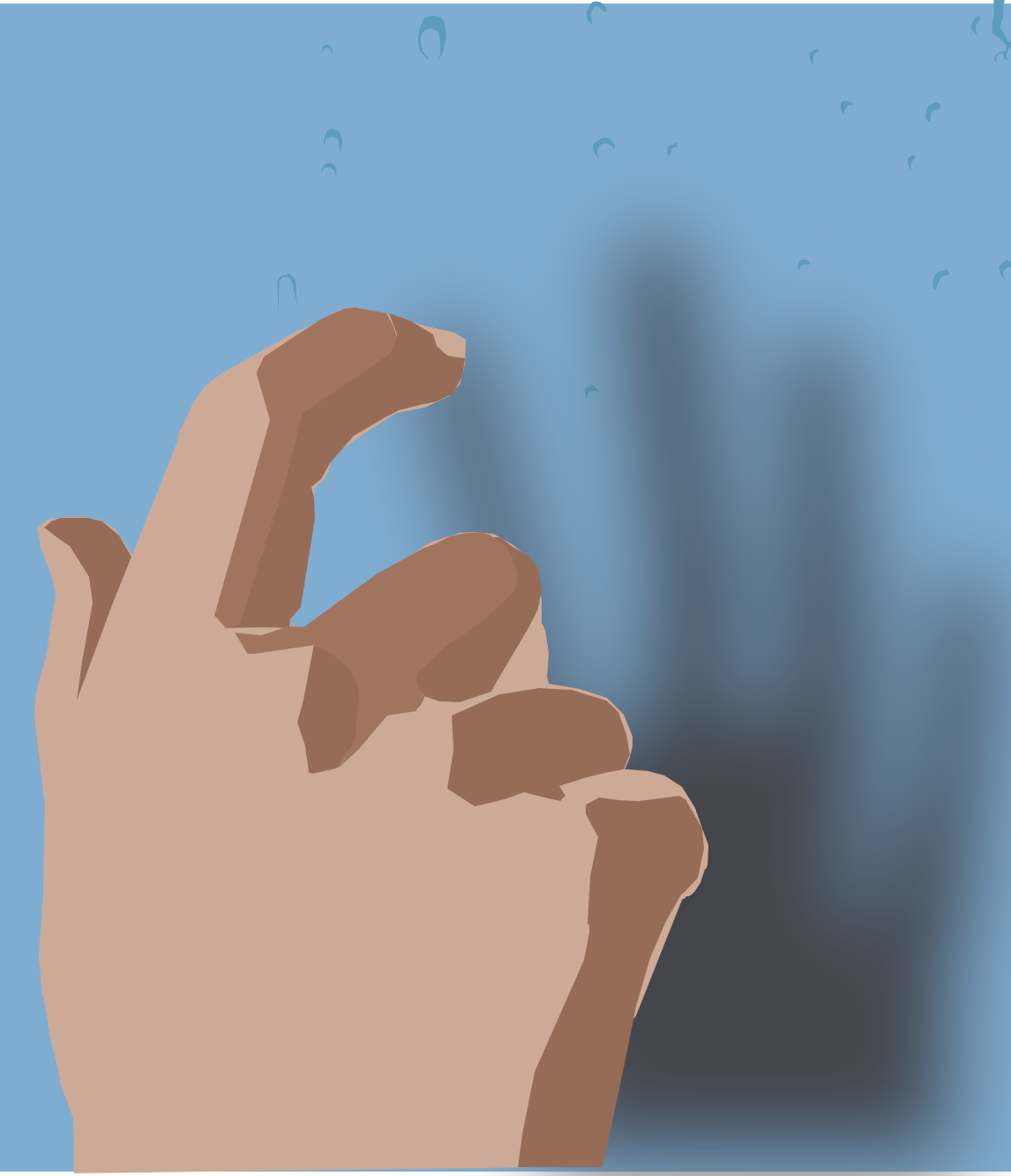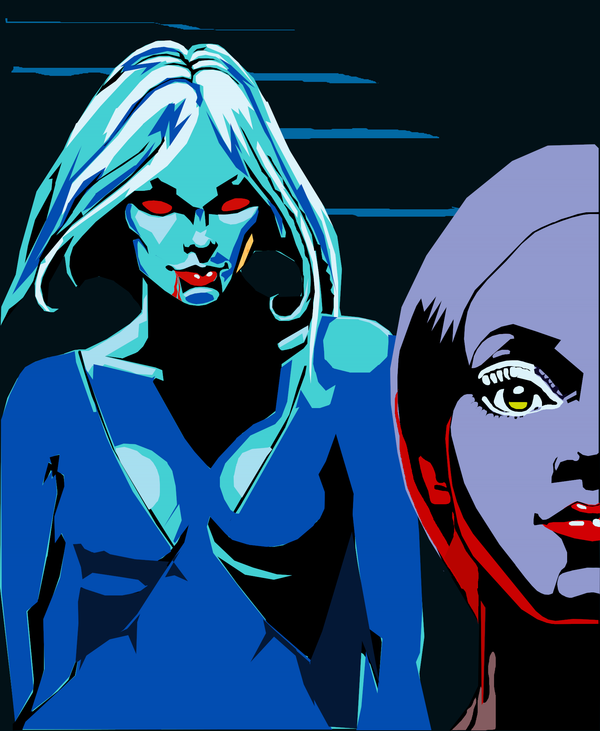A Personal History of Horror Films in 101 Quirky Objects #04: Håkan’s little orange plastic sleigh in Låt den rätte komma in (Let the Right One In) (2008)

by Vince Stadon
“What else am I good for?” – Håkan
It’s 1982 and Oskar is a weedy, lonely, twelve-year-old blond boy who is being relentlessly bullied at school. His dad is an alcoholic who would rather drink with friends he brings home than be with his boy. Each day, Oskar goes out of his low rent home into the snow. He is completely alone. Until he falls in love with a vampire.
Oskar could be me. In 1982, I was a weedy, lonely, twelve-year-old blond boy who was relentlessly bullied at school. It might be illustrative to compare a photo of me aged 12 and a still of Kåre Hedebrant as Oskar. My dad was an alcoholic who brought men home from the pub to continue drinking. I adored snow. And I was in love with vampires – could not get enough of vampires. For me, of course, they are delightful dark fictions. For Oskar, they are very real.
As real as the little girl next door.
I feel Oskar’s loneliness. I feel his frustration and his shame at being bullied. Bullies stuff his trousers down the toilet, so he must walk home in his pants through the freezing snow and ice. Oskar aches for kindness and affection and respect. Because he’s an introverted dumb kid, he does dumb things, like practice stabbing with a knife, or, when prompted by vampire girl Eli to fight back, whack one of his bullies with a pole. He even wants to do weightlifting. Oskar’s life is cold and miserable and small.
I inhabited a world like that. I was Oskar.
Just then I called Eli a little girl, but she’s not really a little girl. She’s hundreds of years old and might once have been male (shockingly, Oskar gets a glimpse of a castration scar above Eli’s pubis). But then again, Eli very much is a little girl, a lonely little girl searching for kindness and affection. But then again, she might just be manipulating Oskar into becoming her new helper. And that would be child abuse.
Each time I watch Let the Right One In, I come away with a different interpretation of Eli, her motivations, her feelings: how much of her is a lonely, scared little girl and how much of her is a powerful centuries-old vampire with a ferocious, unquenchable hunger? And is the point of Eli to keep us guessing, to never really know her, but to be always fascinated and beguiled by her (child actress Lina Leandersson is extraordinary in the role)? It’s one of the reasons why it is one of my favourite films. There are many meanings buried in all that snow and loneliness and darkness and blood. It’s a film you can really dig into.
I completely get Oskar, and I think I’m all in on Eli (whomever or whatever she really is), but it’s Håkan who I feel the sorriest for. He’s a taciturn, very boring middle-aged man whose entire existence is dedicated to protecting and feeding Eli. And to feed Eli fresh warm blood, he must kill people. This necessitates planning and preparation. Håkan has rigged up a murder kit, complete with chloroform for incapacitating victims and a pipe for draining their blood. He even has a little plastic orange sleigh onto which he ties bodies so he can pull them through the thick snow to dump sites.
That orange sleigh is a pathetic thing. It looks cheap. He looks miserable, heaving it through the snow. Håkan looks miserable throughout, in fact, and it’s almost a relief when he’s bumped. His murders are not successful, and he goes from one blunder to another, utterly failing in his task to feed his vampire master/mistress. It’s almost funny. I think he must have been much more efficient and accomplished before the events of the film… otherwise, why would Eli keep him around?
The people who devote their lives to serving vampires seem to have a pretty shitty time of things, it seems to me. From Renfield in Dracula onwards, these deluded, murderous underlings seem to work themselves to the bone in subservient devotion to creatures that treat them like shit. And then they get killed – often by their vampire masters/mistresses. These pathetic characters don’t even have an agreed upon collective noun (in my novel Ella: The Vampire Laws, I call them acolytes, but only because it rhymes with parasites).
I’ve read that the original novel (by John Ajvide Lindqvist, who penned the screenplay for this film) has Håkan outright depicted as a paedophile, and if you watch Let the Right One In with that in mind, his pathetic stumblings and hideous death (he throws acid over his face, and then, in hospital, he offers himself to Eli, who drains his blood then casually dumps his body out of a very high window) are satisfying and enjoyable. The creep gets what he deserves. Any sympathy I had for the character cannot survive that devastating revelation. No one carries his body away on a cheap little orange plastic sleigh, because nobody cares enough.
Meanwhile, Oskar has a friend, and Eli has yet another person under her spell, and the snow keeps falling in the pitch-black night, and the lonely people of Stockholm reach out with aching hearts.
More obvious picks for an object to represent this film: the jar of acid; the knife; the Rubik’s Cube; Håkan’s "murder kit"; the bag of sweets; the "going steady" note.
Låt den rätte komma in / Let the Right One In (2008); 114 mins; Sweden
Directed by Tomas Alfredson; Written by John Ajvide Lindqvist; Produced by Carl Molinder and John Nordling; Cinematography by Hoyte van Hoytema; Music by Johan Söderqvist
Kåre Hedebrant (Oskar); Lina Leandersson (Eli); Per Ragnan (Håkan); Henrik Dahl (Erik); Karin Bergquist (Yvonne); Peter Carlsberg (Lacke); Ika Nord (Virginia); Mikael Rahm (Jocke)
© 2025 Vince Stadon




